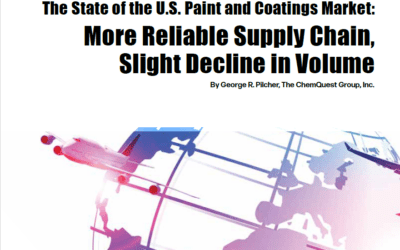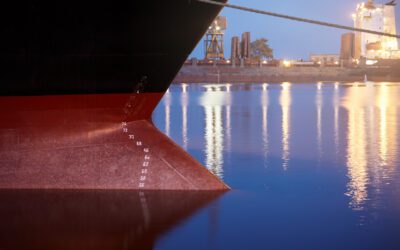Library: Resources & Media
Press Releases
No Results Found
The page you requested could not be found. Try refining your search, or use the navigation above to locate the post.
Market Reports
Articles
Scouting Material Science Innovation
I recently had several conversations with some extremely experienced technical scouts and investors who told me that the best source of new technology in their years of practice has been the startup community. For the CASE market (paints, coatings, sealants, and...
The State of the U.S. Paint and Coatings Market: More Reliable Supply Chain, Slight Decline in Volume
Although the paint and coatings market recovered in 2021 from a 2020 dip in volume, the real news is the dramatic increase in value that has resulted from the high cost of crude, decreasing (but not completely halted) global supply chain issues, remnant shortages, improved (but not back to pre-2020 levels) transportation/logistics issues, and labor shortages.
Marine Coatings: Striking a Balance in Biofouling Control
In 2022, marine coatings were an $8.7 billion market, with a growth projection of 5-7% through 2028. However, there is a lot more to marine coatings than great aesthetics. At approximately a 64% share, anti-fouling/fouling release coatings were the largest portion of the marine coating market, followed by anti-corrosion and self-cleaning/self-polishing coatings. In addition, marine coatings have special and specific functionalities to protect watercraft above and below the waterline. Finally, marine coatings are specially formulated to be easily cleaned.
2023 Raw Materials and Chemicals Overview for Adhesives
The manufacturing of adhesives and sealants relies on raw materials and chemicals (including some specialty chemicals) that hold a significant position within the vast chemical industry. While the U.S. chemical industry is facing challenges such as low demand, oversupply, and narrowing profit margins, numerous opportunities exist—particularly as companies increasingly focus on sustainability and circularity. Strategic decision making and investments in innovation will be crucial for long-term success in a changing landscape.
WEBINAR: Optimizing Plant Operations Including Design Considerations for Growth
The second webinar in our four-part Operational and Manufacturing Excellence series, “Optimizing Plant Operations including Design Considerations for Growth,” was held July 25. In partnership with the American Coatings Association and led by ChemQuest director Robert Kramer, this webinar focused on facility start-ups, plant expansion, increases in operations capacities, alternate capabilities, plant relocations, and asset retirements. You are invited to view the presentation slides here and link to the webinar recording.
Q&A with Sandrine Garnier: Coatings Industry Trends
PPCJ spoke to Sandrine Garnier Ph.D., a recently appointed Director of The ChemQuest Group, about her plans for her new role and her views on the biggest trends and challenges facing the coatings industry at the moment.








